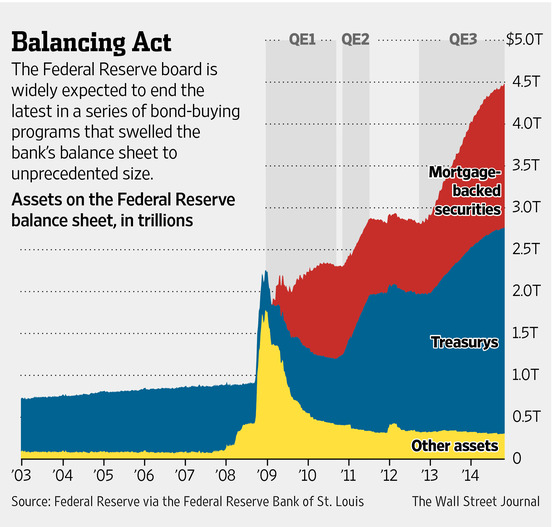In the statement after the FOMC meeting of December 17th, the Federal Reserve Bank (“Fed”) states that “it can be patient to normalize the stance of monetary policy,” a change from the statement of the previous meeting (October 29th) that “it likely will be appropriate to maintain the 0 to 0.25 percent target range for the federal funds rate for a considerable time following the end of its asset purchase program.” During the press conference following the statement, Ms. Yellen further clarified that patient means that the Fed is unlikely to start raising the federal funds rate for “at least the next couple of meetings.”
The swap of “considerable time” for “patient” is overall a neutral statement, neither more hawkish nor more dovish. On one hand, by removing “considerable time,” it officially acknowledges that it may raise the federal funds rate in 2015 if warranted by data. The combination of “patient” and “at least the next couple of meetings” essentially eliminates the early 2015 rate hike scenario. Rate hikes following the January and March 2015 meetings are all but impossible, and April and June hikes are also extremely unlikely. As arguably the most sophisticated central bank in the world, any rate hike during the first half of 2015 will be considered a rush job or a panic move that will surely endanger its credibility and disrupt global financial markets and the world economy. The statement essentially narrows the window of the first rate hike to 2H/2015 from a wide range of early 2015 to 2016. Following the statement, Treasury yields mostly little changed with the two-year yield, the closest proxy for the federal funds rate, rising to 0.619% from 0.554% on the previous day close.
This is not the first time for the Fed to transition from “considerable time” to “patient.” In the 12/9/2003 FOMC meeting statement, near the end of that easing cycle, it stated that “the Committee believes that policy accommodation can be maintained for a considerable period.” The next meeting though (1/28/2004), the statement became “the Committee believes that it can be patient in removing its policy accommodation.” And on 6/30/2004, two meetings later, the federal funds rate was raised by 25 basis points (bps) to 1.25% from 1.00%.
In contrast to lowering rates, the Fed is indeed patient in raising rates. Excluding the Volcker period, when Paul Volcker had to raise rates aggressively to battle runaway inflation during the 1970s and 1980s, it raised the fed funds rate almost always at the slowest, 25 bps pace. For the aforementioned last tightening cycle, it raised the fed funds rate 16 more times, each at 25 bps, after the first hike. It took two years, 17 consecutive 25 bps raises for the fed funds rate to rise from 1.00% to 5.25%. The last 25+ bps raise took place on 5/16/2000, when the Fed raised the rate by 50 bps from 6.00% to 6.50%, but this was very much a “one and done” move as it was the last raise of that tightening cycle.
The Fed, however, is far more aggressive and impatient when lowering rates. It took the Fed just a little over a year to cut the fed fund rate from 5.25% to 0 – 0.25%. Starting with a 50 bps cut on 9/18/2007, it followed through with multiple 50 bps and 75 bps cuts before it cut the rate from 1.00% all the way down to 0 – 0.25% on 12/16/2008.


